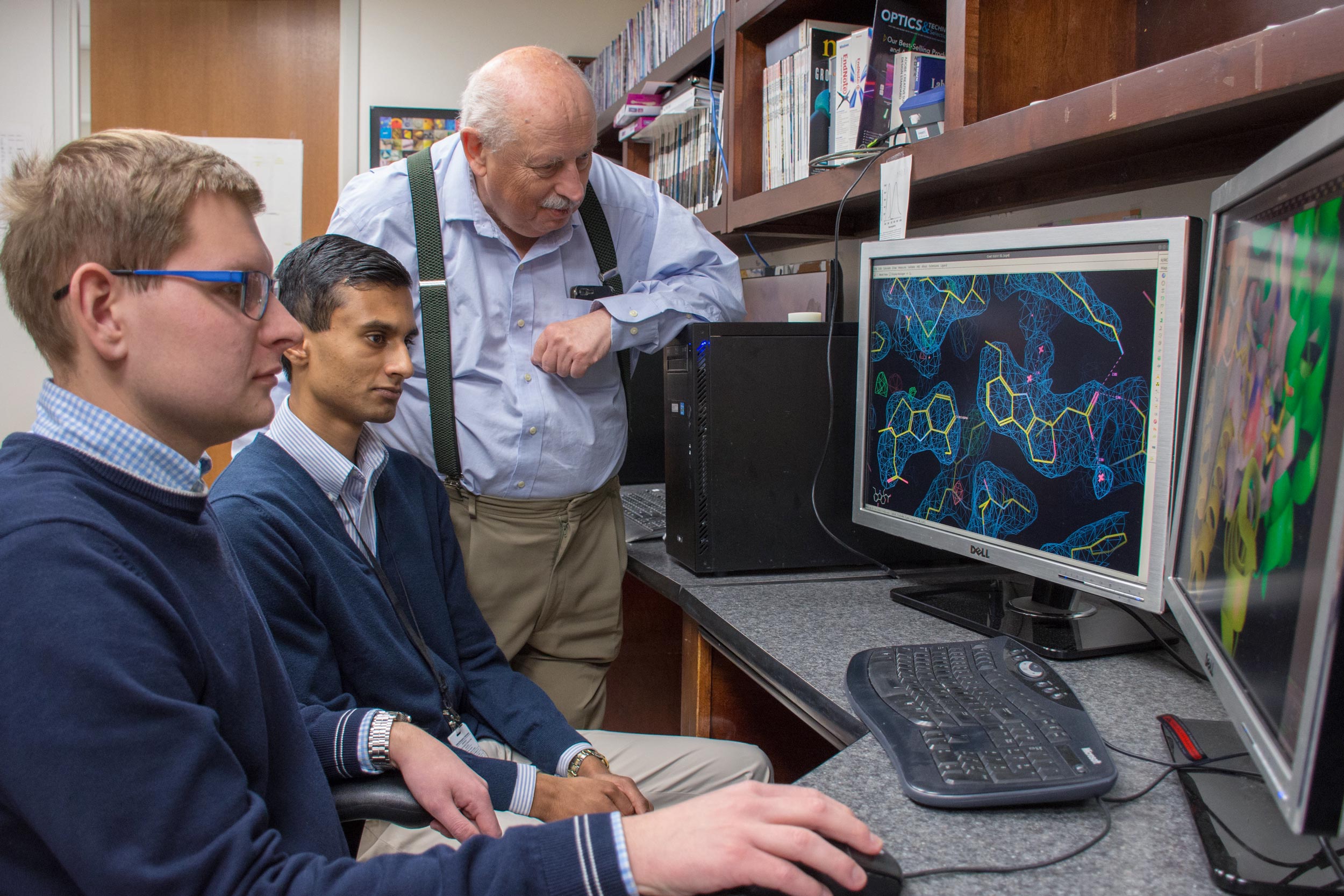Scientists at the University of Virginia and elsewhere have mapped out how the body transports testosterone, and their surprising findings may explain low testosterone levels seen in men with diabetes or patients on certain medications.
The discovery allows scientists to understand exactly how testosterone, the male sex hormone, binds to a protein called serum albumin and can be carried through the body.
The finding suggests that many drugs bind to serum albumin in the same way as testosterone, potentially explaining why the drugs interfere with normal testosterone transport. Further, the researchers report a similar overlap may explain why low testosterone is common in men with type 2 diabetes.
“This represents a key finding from one of many albumin-related projects investigated in our laboratory,” said principal investigator Wladek Minor of UVA’s School of Medicine. “We study human and equine serum albumins, but are interested in bovine, rat, mouse and rabbit serum albumins as well. These projects have been active for more than a decade in the lab.
“But we cannot stop our research here. We must address the next big challenge, which is the determination of albumin structures in complex with commonly used and abused opioids. We believe that the determination of these structures may be crucial in the development of new methods and treatments as our country combats the opioid crisis.”
Potential Answers About Low T
The discovery represents a collaboration of Minor’s lab, in UVA’s Department of Molecular Physiology and Biological Physics, with that of David Hage of the Department of Chemistry at the University of Nebraska-Lincoln. Together, they developed the first 3-D structure of serum albumin bound to a sex hormone with results of binding studies, which led to some unexpected findings.
Using an approach known as X-ray crystallography, the researchers were able to inspect the complex in unbelievable detail. But this was no easy task: First they had to capture the pairing inside a lab-made crystal – a tremendous challenge – and then they bombarded it with a stream of powerful X-rays. By tracking how the X-rays diffracted, they could determine the shape of something far too small for even the most powerful light microscopes to see.
What they found defied expectations: Testosterone was not bound in its previously predicted binding site, but rather in two other sites, both with an affinity for fatty acids, various metabolites and certain drugs. That suggests that testosterone faces strong competition for transport inside the body – important information for doctors not just when prescribing existing treatments, but also when looking for new treatments. (Serum albumin, for example, is an important carrier of cancer drugs.)
“It is wonderful that we can use state-of-the-art techniques to study the transport of hormones and drugs in the blood on the molecular level.” said Mateusz P. Czub, a graduate student in Minor’s lab and lead author of the group’s new paper outlining the discovery. “I hope to combine our results with the findings of other researchers from UVA so that we may collectively contribute to the development of personalized medical treatments.”
“I am thrilled to have contributed to a basic research project that can be later used for translational research and advancing the treatment of real patients in a clinic,” said Barat S. Venkataramany, the second author and an undergraduate student in UVA’s Department of Chemistry, who recently was admitted to medical school. Minor’s lab, like many successful UVA labs, routinely involves undergraduates in its research, which benefits both the students and the research.
Findings Published
The researchers unveiled their findings in the scientific journal Chemical Science. The article was featured as the journal’s outside back cover story for the Feb. 14 issue. The research team consisted of Czub, Venkataramany, Karolina A. Majorek, Katarzyna B. Handing, Przemyslaw J. Porebski, Sandya R. Beeram, Kyungah Suh, Ashley G. Woolfork, Hage, Ivan G. Shabalin and Minor.
The work was supported by the National Institutes of Health’s National Institute of General Medical Sciences, grants R01-GM117325, R01-GM117080 and R01-GM118619, as well as funds from the National Institute of Allergy and Infectious Diseases, National Institutes of Health, and the Department of Health and Human Services under contracts Nos. HHSN272201200026C and HHSN272201700060C
To keep up with the latest medical research news from UVA, subscribe to the Making of Medicine blog.
Media Contact
Article Information
March 27, 2019
/content/testosterone-discovery-may-explain-low-levels-men-diabetes

